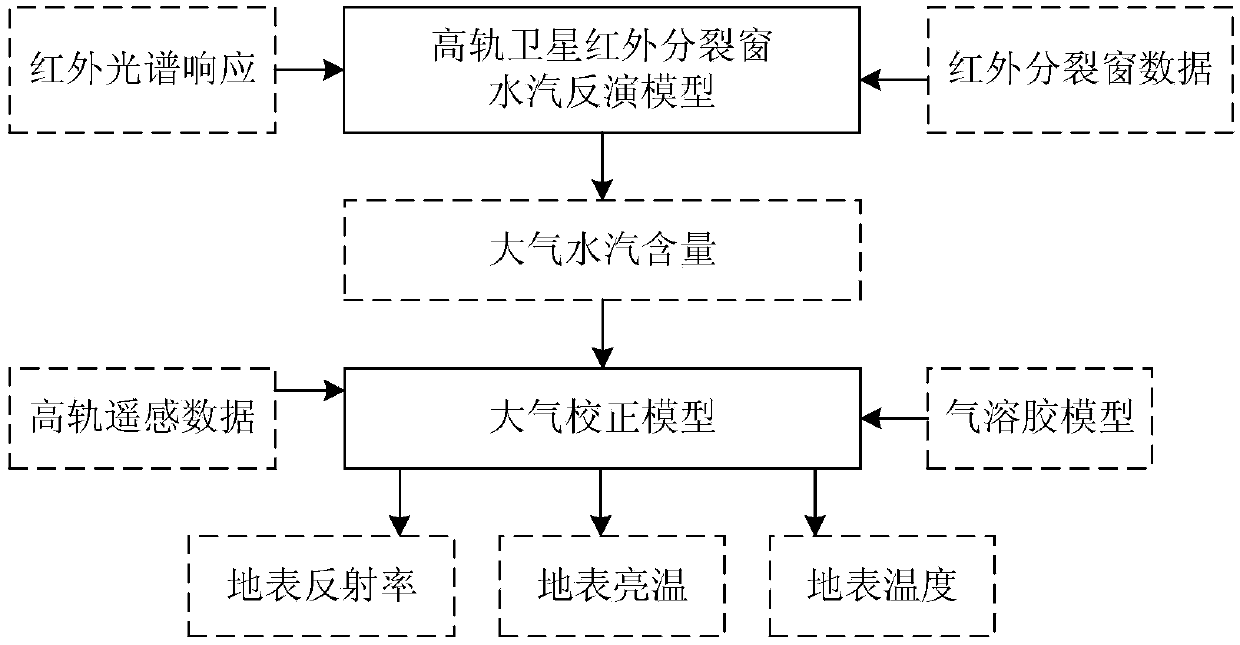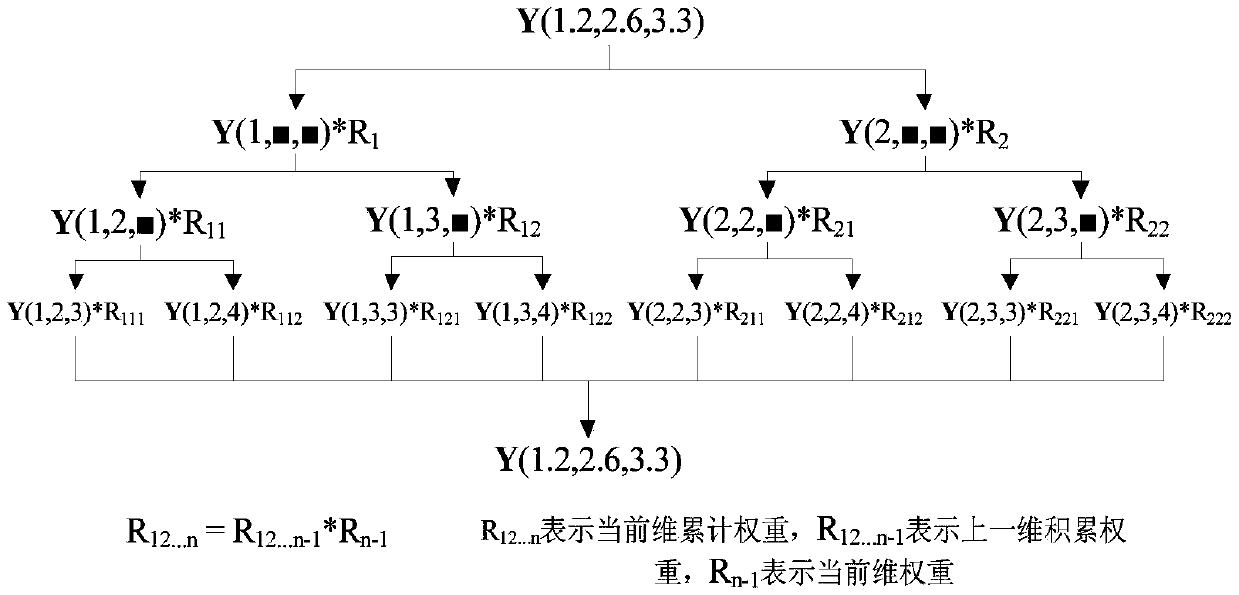Atmospheric correction method for infrared channel of common-caliber high-rail remote sensing satellite
A remote sensing satellite and atmospheric correction technology, applied in the field of remote sensing image processing, can solve problems such as difficulty in real-time atmospheric correction, unfavorable commercial application of common aperture high-orbit remote sensing images, etc. Effect
- Summary
- Abstract
- Description
- Claims
- Application Information
AI Technical Summary
Problems solved by technology
Method used
Image
Examples
Embodiment Construction
[0035] The present invention will be described in detail below in conjunction with the accompanying drawings and specific embodiments.
[0036] High-orbit remote sensing satellites have designed split-window channels in the thermal infrared band. Theoretically, for two thermal infrared bands with different water vapor absorptivity, the difference in the brightness temperature images can be used to estimate the water vapor content of the entire atmospheric column. Based on this principle, the present invention proposes an atmospheric correction method for the infrared channel of a common-aperture high-orbit remote sensing satellite.
[0037] Such as figure 1 As shown, taking the imaging data of high-orbit remote sensing satellites as an example, a method for atmospheric correction of infrared channels of common aperture high-orbit remote sensing satellites proposed by the present invention includes the following steps:
[0038] (1), by thermal infrared absorption channel B 1...
PUM
 Login to View More
Login to View More Abstract
Description
Claims
Application Information
 Login to View More
Login to View More - R&D
- Intellectual Property
- Life Sciences
- Materials
- Tech Scout
- Unparalleled Data Quality
- Higher Quality Content
- 60% Fewer Hallucinations
Browse by: Latest US Patents, China's latest patents, Technical Efficacy Thesaurus, Application Domain, Technology Topic, Popular Technical Reports.
© 2025 PatSnap. All rights reserved.Legal|Privacy policy|Modern Slavery Act Transparency Statement|Sitemap|About US| Contact US: help@patsnap.com



